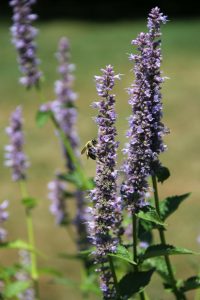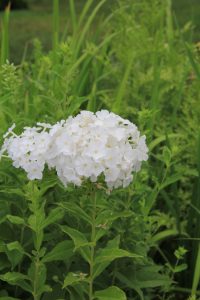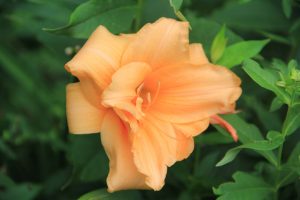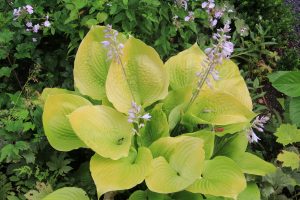Color Theory Part II – North Garden
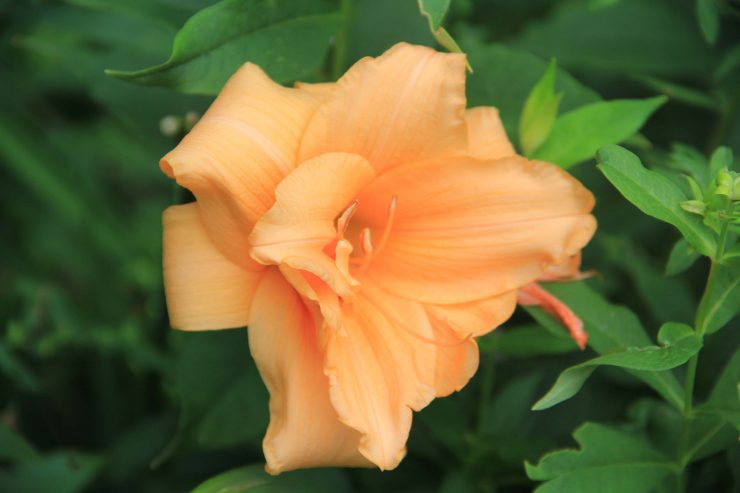
Last week I wrote about color theory and our color choices for the Rose Garden. Today I want to highlight the more formal North Garden, which is looking prettier every day! There is a long tradition of using certain colors in formal gardens. White is considered clean and classy (but it can be tricky to work with – more on that later). Yellows and blues add to this calm and formal mix. This is why we chose blue, yellow, chartreuse, white, and apricot as our North Garden colors. It is our version of formal yet playful.
- Anise Hyssop (Agastache ‘Blue Fortune’)
- Phlox ‘David’
- Daylily ‘Lusty Little Lulu’
- Hosta ‘Sum and Substance’
Planning for the North Garden operates much the same way as the Rose Garden. We begin with the tulip order (which we will place soon!). Each year we choose a fresh combination of tulips to be planted in our gardens. (If you did not get the chance to see them in person this year, hop on over to the tulip blog post here.) Next we select spring and summer bulbs, annuals, perennials, tender perennials (such as dahlias). We are always working within the color plan while also taking into consideration bloom time, height, longevity, heat tolerance, and color compatibility (does this apricot coordinate with this blue and chartreuse? Answer: Yes).
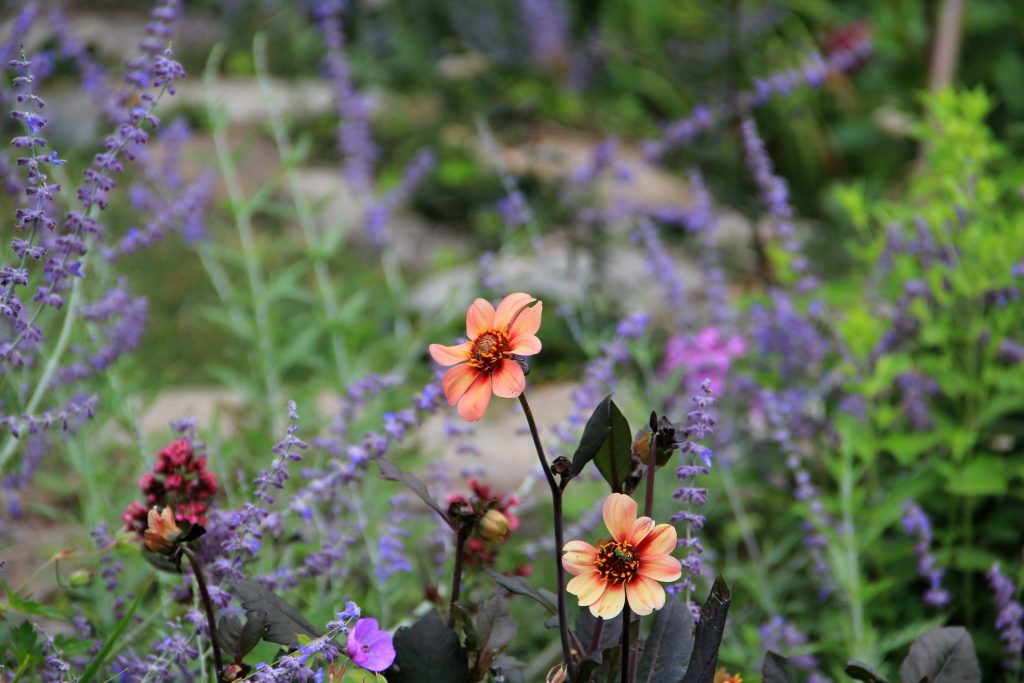
Apricot with blue and chartreuse in the North Garden – Dahlia ‘Happy Single First Love’ with Russian sage (Perovskia atriplicifolia) and Tansy (Tanacetum vulgare ‘Isla Gold’) in the background.
There is much to color theory that I have yet to learn. Just the other day I was talking with Julie Morris, Blithewold’s Director of Horticulture Emerita, who told me that white is known to create visual “holes” in the garden, which makes it harder to work with than most colors. It is important to consider what other flowers are blooming in the garden at the same time. Blue can be tricky as well as it recedes from the eye. If a garden is planted entirely with blue and white it will have a unique feel, one very different than a garden that incorporates a wider variety of color. This is why we choose colors such as pale yellow, apricot, and chartreuse for the North Garden – they play well with the formality of white and blue. That is to say, none of these colors speaks much louder than the others. They all work in concert as one voice, balancing one another in the ensemble. When I survey the North Garden, I don’t notice particular flowers as much as I notice the whole composition.
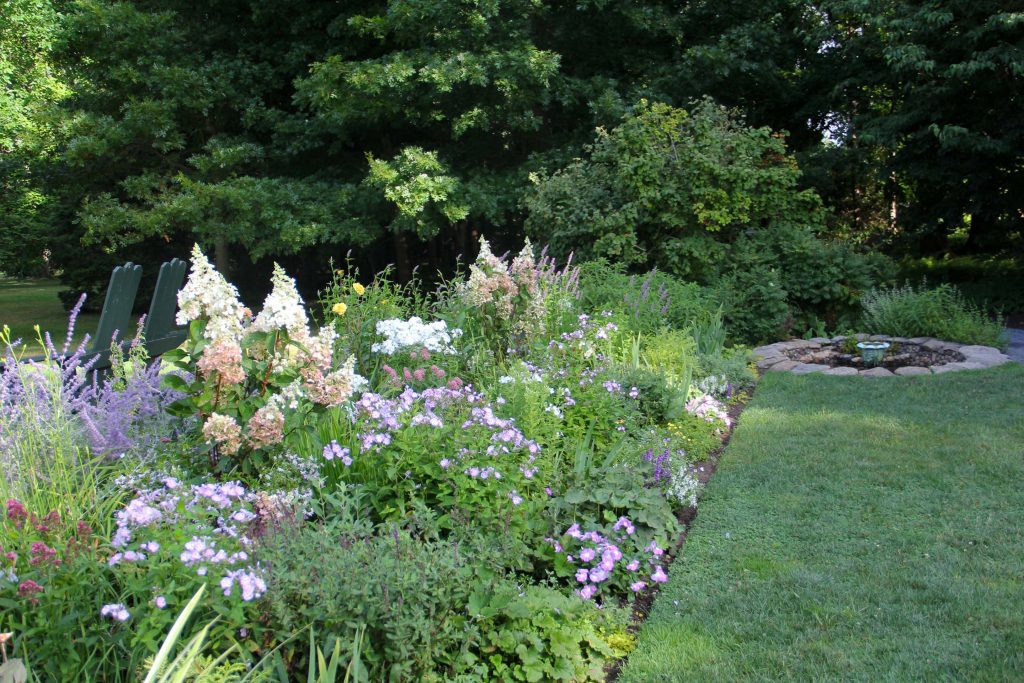
This longest garden area is full of repeating colors (white, pale purple, chartreuse) and textures (large hydrangea leaves, upright iris foliage) to set a happy, calming mood.
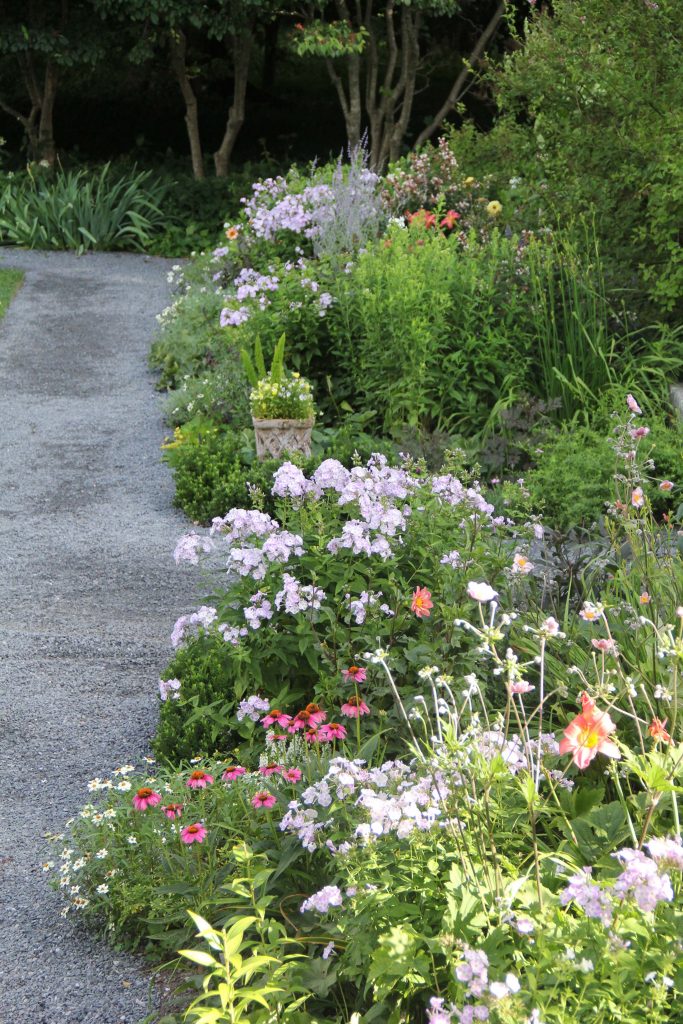
The flow of color in the entrance to the North Garden creates a welcoming atmosphere from the moment you step in to this space. I love that the first feeling is of happy excitement, especially as this is the garden where wedding ceremonies take place.
Come by soon and see all the colors for yourself. Comment below with how the colors make you feel as you walk from one garden space to the next.

